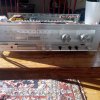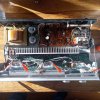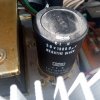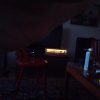solderdude
Grand Contributor
It is to stay within the SOA of the transistors so their max. power ratings are never reached.
SOA stands for Safe Operating Area
At any voltage across the transistor a specific current is allowed. This is the SOA.
When amps must deliver high output power (so high voltages and high currents) then 1 pair of transistors won't cut it.
You will need more in parallel that share the current at the same voltage so the transistors aren't overloaded by current peaks.
The heat generated in the transistor 'chip' itself needs to be drained. That takes some time. Spreading this over a larger surface also helps.
SOA stands for Safe Operating Area
At any voltage across the transistor a specific current is allowed. This is the SOA.
When amps must deliver high output power (so high voltages and high currents) then 1 pair of transistors won't cut it.
You will need more in parallel that share the current at the same voltage so the transistors aren't overloaded by current peaks.
The heat generated in the transistor 'chip' itself needs to be drained. That takes some time. Spreading this over a larger surface also helps.
Last edited:





